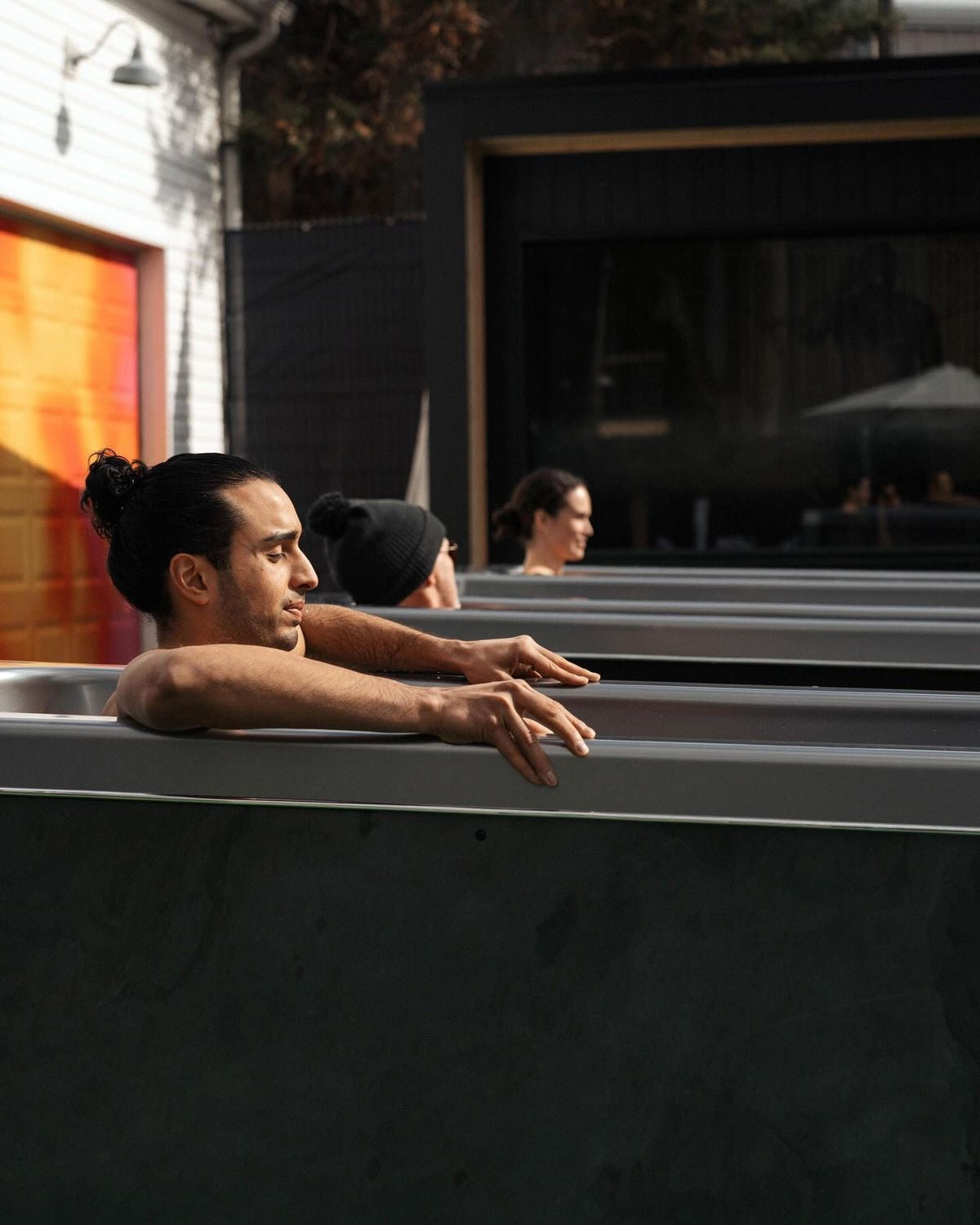Let’s face it—no one wants their refreshing Ice Bath to turn into a germ jacuzzi. So, are Cold Plunge Tubs sanitary? Yes, they can be—if maintained properly. From filtration to personal hygiene habits, this article explains what keeps your Cold Plunge or Ice Bath Tub clean, safe, and seriously chill.

The Importance of Cold Plunge Tub Hygiene: Why Cleanliness Matters
Understanding Potential Contaminants (Bacteria, Mould, Biofilm)
Cold Plunge Tubs are exposed to the elements and human bodies. That means bacteria, mould, sweat, and biofilm can build up quickly.
Without proper care, this microbial mix can stick to surfaces and thrive in stagnant water. Biofilm especially can be stubborn, forming a slimy layer that’s tough to remove.
Even clean-looking tubs can harbour hidden nasties if not maintained.
Health Risks Associated with Unsanitary Tubs
When Cold Plunge Tubs aren’t cleaned regularly, users may be exposed to skin irritations, fungal infections, or respiratory issues.
These problems often arise from bacteria and mould spores lingering in the water or on the tub's surface.
Those with weakened immune systems could face higher risks. A visibly clean tub isn’t always truly hygienic—sanitation goes deeper than appearances.
Enhancing the User Experience Through Cleanliness
A clean Cold Plunge experience feels fresh, energising, and safe. Hygiene not only prevents infections but also adds to overall comfort and mental ease.
Knowing you're dipping into a well-maintained Ice Bath Tub lets you focus on recovery and relaxation.
No one wants a side of germs with their cold therapy.
Key Factors Contributing to Cold Plunge Sanitation
Advanced Filtration Systems (Types and Functionality)
Cold Plunge Tubs often use advanced filtration systems to keep water clean. Cartridge filters trap dirt and debris, while sand or glass filters provide long-term efficiency.
Some systems combine UV sterilisation with mechanical filtration for added protection. These filters help reduce the need for frequent manual cleaning.
Water Treatment and Disinfection Methods (UV, Ozone, Hydrogen Peroxide, Chlorine Alternatives)
UV treatment breaks down harmful microorganisms using light, while ozone adds an oxygen molecule to neutralise contaminants.
Hydrogen peroxide is another common disinfectant used in high-end Cold Plunge Tubs. Unlike chlorine, it doesn’t leave harsh smells or irritate the skin.
Alternative sanitisers maintain hygiene without compromising the cold therapy experience.
The Role of Water Chemistry (pH, Alkalinity, Calcium Hardness)
Balancing pH, alkalinity, and calcium hardness is key to a clean Cold Plunge Tub.
A pH that's too high or too low can cause irritation or allow bacteria to thrive.
Proper alkalinity stabilises pH levels, while balanced calcium hardness protects equipment and prevents scale buildup.
Practical Steps for Effective Cold Plunge Tub Maintenance

Regular Water Changes: Frequency and Best Practices
Water should be changed every one to two weeks, depending on usage and tub size. High-frequency use may require more frequent changes.
Always drain and refill with clean, filtered water.
Adding treatment agents during refills helps maintain long-term cleanliness.
Filter Cleaning and Replacement: A Step-by-Step Guide
Remove filters and rinse them weekly under running water. Use filter cleaner monthly to break down oils and residues.
Replace filters every few months or as recommended by the manufacturer. Clean filters ensure water stays crystal-clear and sanitary.
Comprehensive Tub Cleaning: Materials and Techniques
Use a soft cloth or sponge with a non-abrasive cleaner to scrub interior surfaces. Avoid harsh chemicals that could damage the tub.
Rinse thoroughly and dry before refilling. Regular cleaning helps prevent stains, odours, and microbial buildup.
Best Practices for Personal and Environmental Hygiene
The Importance of Showering Before a Cold Plunge
Always shower before entering a Cold Plunge Tub. This removes sweat, dirt, and oils that can contaminate the water.
It also reduces the strain on filtration and treatment systems. A quick rinse goes a long way in keeping the water fresh.
Utilising Tub Covers to Prevent Contamination
Use a tight-fitting tub cover when the Cold Plunge Tub is not in use. This prevents debris, insects, and airborne contaminants from entering the water.
Covers also help maintain water temperature and reduce evaporation.
Maintaining a Clean Surrounding Area
The area around your Cold Plunge should be kept dry and clean. Wipe down floors and remove leaves or dirt regularly.
Encourage users to wear clean footwear or go barefoot to avoid tracking debris into the tub.
Troubleshooting Common Hygiene Issues
Addressing Cloudy Water and Odours
Cloudy water can signal poor filtration or imbalanced water chemistry. Test water regularly and adjust pH and alkalinity as needed.
Unpleasant odours may indicate bacterial growth—shock treatment or a water change may be required.
Preventing Algae and Biofilm Buildup
Algae growth is more likely in tubs exposed to sunlight. Use UV or ozone treatment and keep your Cold Plunge covered when not in use.
Regular scrubbing prevents biofilm from forming on surfaces. Prevention is always easier than treatment.
Takeaways:
-
Clean Cold Plunge Tubs = safe and enjoyable recovery
-
Use filtration, water treatment, and routine cleaning to maintain hygiene
-
Keep your Ice Bath Tub fresh with regular water changes and pre-dip showers
Whether it's an Ice Bath, Cold Plunge, or Cold Plunge Tub—staying sanitary keeps the chill truly refreshing.






